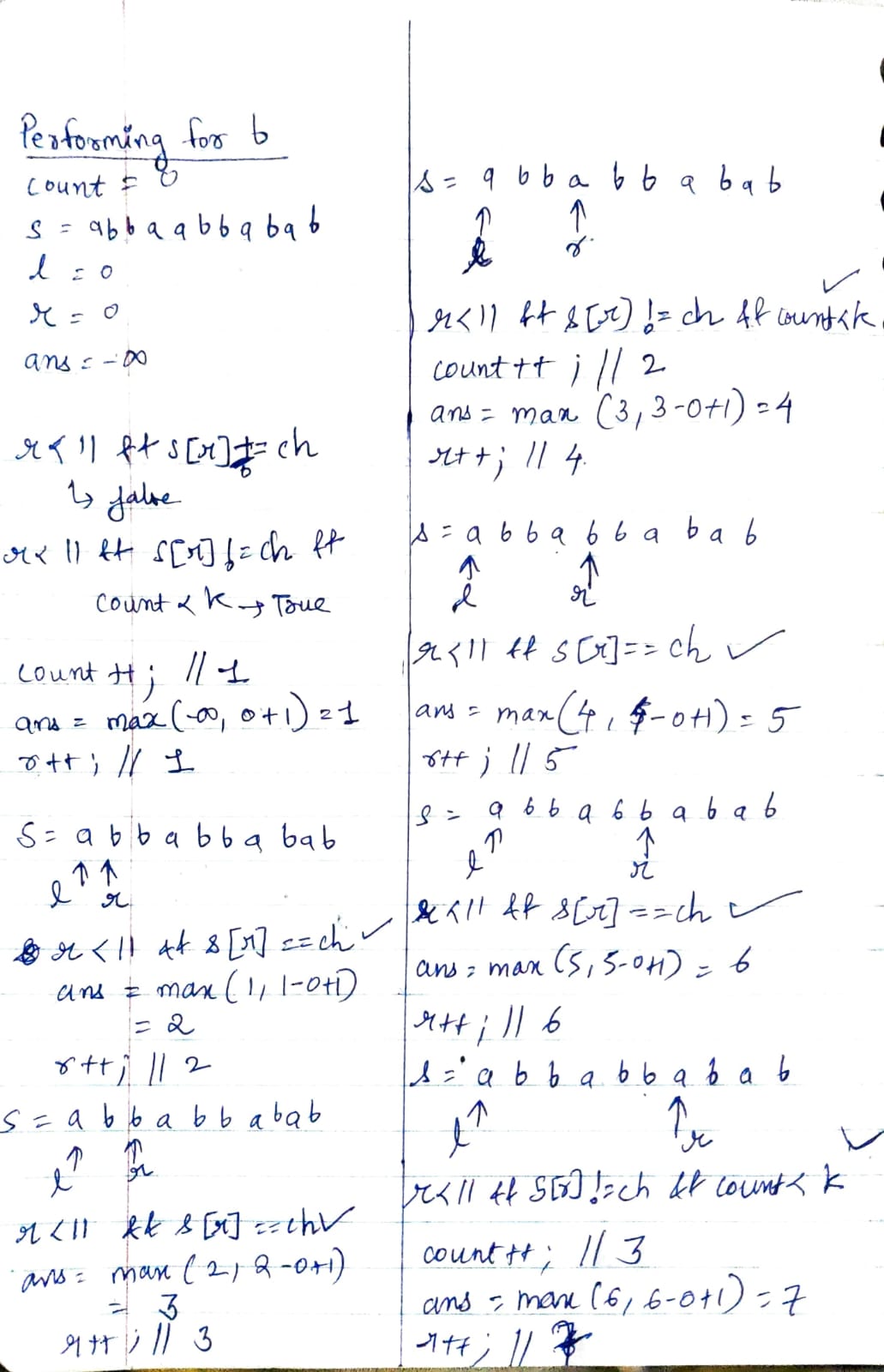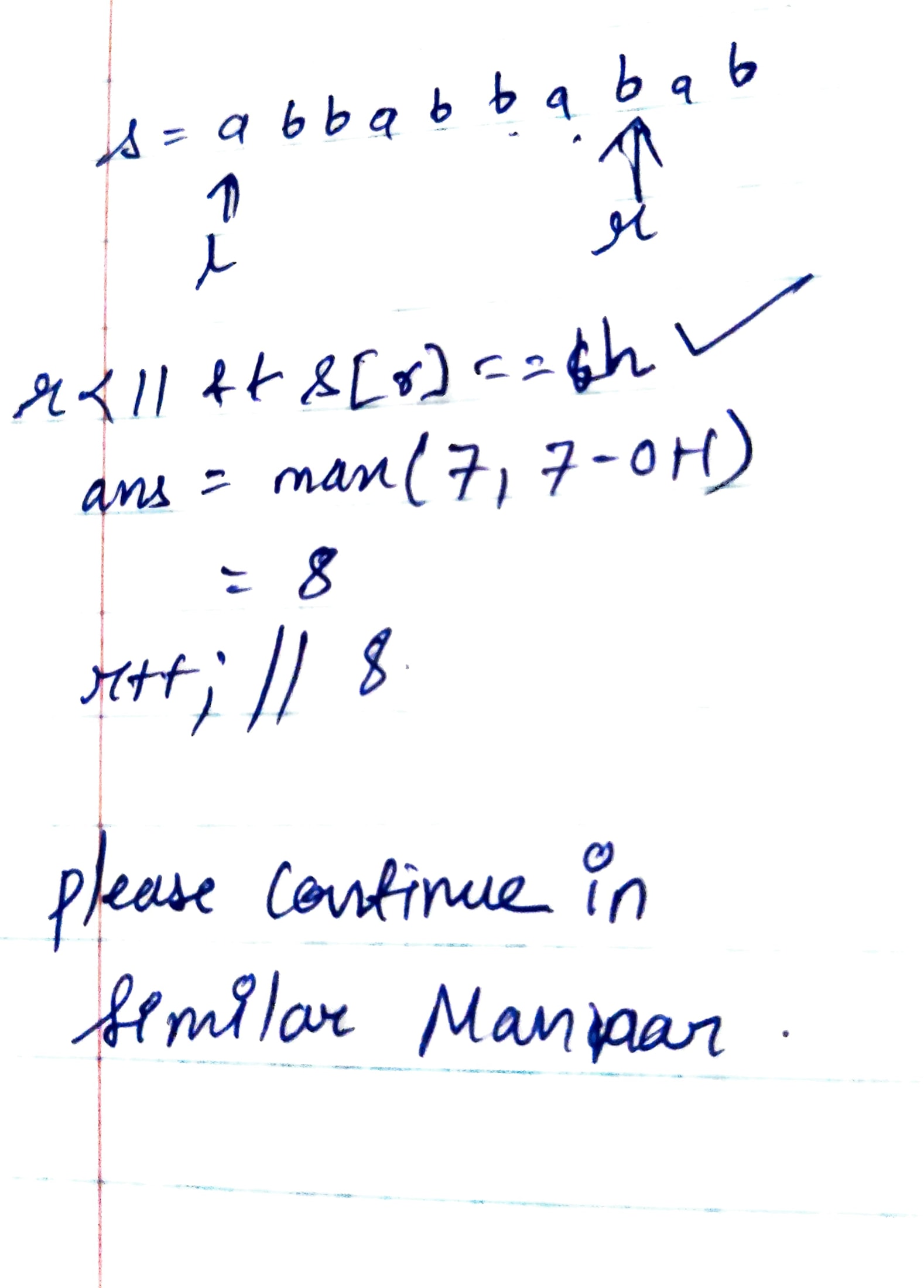Vaasya and Strings
 Shreyash Chavhan
Shreyash Chavhan
Problem statement
Given a string of 'a's and 'b's of length n, find the maximum length of a substring with consecutive equal letters. You can change at most k characters in the original string. What is the maximum length of the substring?
Constraints
The first line of the input contains two integers n and k (1 ≤ n ≤ 100 000, 0 ≤ k ≤ n) — the length of the string and the maximum number of characters to change.
The second line contains the string, consisting of letters 'a' and 'b' only.
Examples
n = 11, k = 3
S = "abbaabbabab"
Output = 8
Sudo Code
Initialize the count, ans, l, r.
Loop till r is less than n.
Loop and get the maximum consequetive same element - (s[r] == ch)
Loop and consume the available k's - (s[r] != ch)
Loop and increament and update cound based on value of s[l] - (s[r] != ch)
Note - First perform above steps for a and then b, Get max of both.
Dry Run


Solution
public class vasyaandstrings {
public static int maxBeauty(String str, int k, char ch) {
// Step 1. Initialize the count, ans, l, r.
int count = 0;
int ans = Integer.MIN_VALUE;
int l = 0, r = 0;
Loop till r is less than size of string
while (r < str.length()) {
// Step 2.1. Loop and get the maximum consequetive same element - [s[r] == ch]
while (r < str.length() && str.charAt(r) == ch) {
ans = Math.max(ans, r - l + 1);
r++;
}
// Step 2.2. Loop and consume the available k's - [s[r] != ch]
while (r < str.length() && str.charAt(r) != ch && count < k) {
count++;
ans = Math.max(ans, r - l + 1);
r++;
}
// Step 2.3. Loop and increament l and update cound based on value of s[l] - [s[r] != ch]
while (l <= r && r < str.length() && str.charAt(r) != ch && count >= k) {
if (k == 0) {
l = ++r;
break;
}
count -= (str.charAt(l) != ch) ? 1 : 0;
l++;
}
}
return ans;
}
public static void main(String[] args) {
Scanner scanner = new Scanner(System.in);
int n = scanner.nextInt();
int k = scanner.nextInt();
String str = scanner.next();
int x = maxBeauty(str, k, 'a');
int y = maxBeauty(str, k, 'b');
System.out.println(Math.max(x, y));
}
}
Time complexity Analysis
Time Complexity - O(N)
Space Complexity - O(1)
Topics Covered
Two Pointers
Companies
It's a question asked in codeforces contest, included this because this give a good intuition of two pointer approach.
Subscribe to my newsletter
Read articles from Shreyash Chavhan directly inside your inbox. Subscribe to the newsletter, and don't miss out.
Written by
